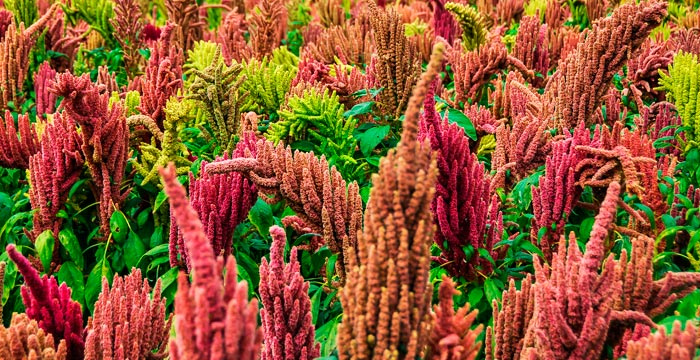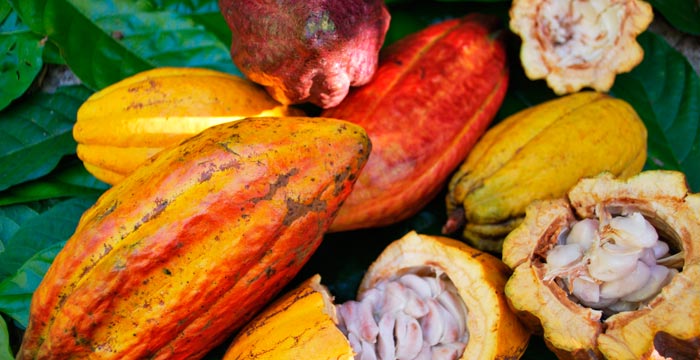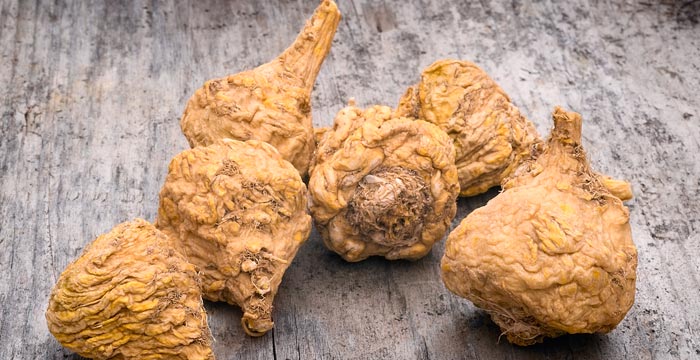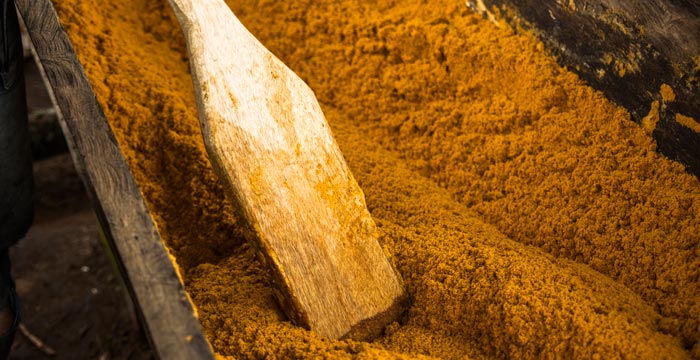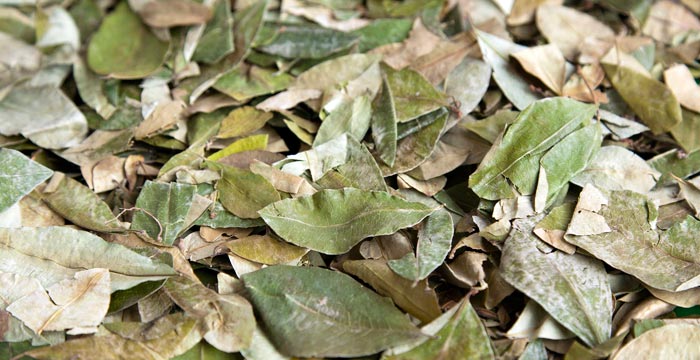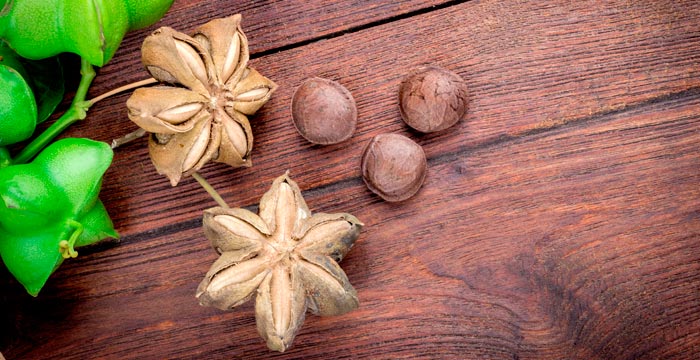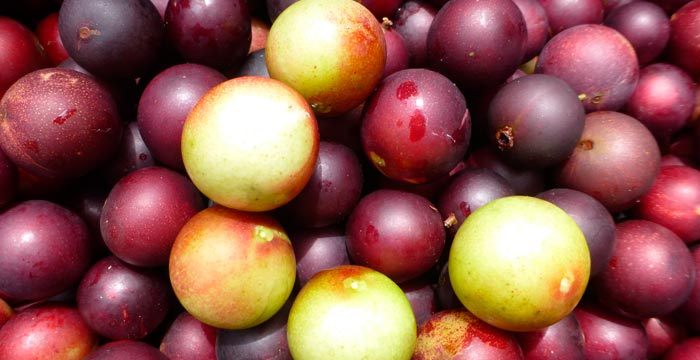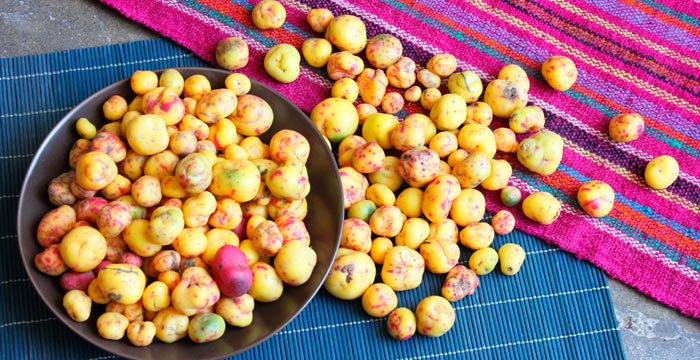Peruvian Superfoods
A mecca for super foods, Peru is home to a long list of good-for-you agricultural products, due in large part to the country’s diverse microclimates and landscapes. From quinoa to tarwi, get to know these Peruvian super foods. You’ll likely spot them on store shelves, restaurant menus, and even in cocktails during your exclusive tour to Peru.
Quinoa
The so-called “gold of the Incas,” Quinoa was the food of choice for Andean warriors who needed to boost their stamina. Now, it’s the “it” food of the moment in much of North America, Europe and Asia.
With high levels of protein, fiber, iron, magnesium, lysine, manganese and vitamin B12 as well as zinc, copper, and potassium, its classification as a superfood is very much deserved. What’s more, quinoa’s sky-high fiber levels can help reduce cholesterol and prevent heart disease. And we happen to think it’s pretty tasty too.
Grown in the high Andes, quinoa is usually boiled just like a grain, though it’s actually a seed from a plant related to wild spinach. During your private trip to Peru, you’ll probably come across several different varieties, including red, yellow and black quinoa.
Cacao
Loaded with vitamins, anti-aging polyphenols and anti-inflammatory antioxidants, cacao seeds are a bonafide superfood. Their benefits are plentiful: the elevated flavonoid content helps protect the heart and boots serotonin levels, thus acting as a natural mood enhancer.
All too often, the health perks of cacao are stripped by processing techniques. But with increasing awareness of cacao’s integral benefits, more and more producers are opting to use raw, naturally fermented cacao, thus retaining all the natural goodness.
Cacao seeds come from the fruit of the cacao tree, also known as the theobroma, which thrives in the Peruvian Amazon and in the Andean foothills. The best place to purchase healthful cacao products during a private Peru trip is at one of Lima’s weekend bioferías (organic markets) or at Cusco’s Chocolate Museum.
Maca
Maca is most often identified in headline-grabbing style as “nature’s Viagra” or, for the less sensationalist, “Peruvian ginseng.” But these sobriquets fail to fully explain the incredible health benefits of this Andean root. Besides perking things up between the sheets, it’s also thought to enhance fertility and reduce the symptoms of menopause and PMS, as well as having anti-aging and stress-reducing effects.
The latest superfood on this list to have gained widespread popularity, maca is now a frequent sight in U.S. and Canadian stores. While you’re enjoying a customized tour of Peru, look for it in the cereal section of the supermarket where it is often combined with oatmeal.
So far, the superfoods we have mentioned have already caused quite the stir on foreign shores, but Peru also has a few lesser-known, nutrient-dense crops up its sleeve.
Chancaca / Panela
Increasingly, refined sugar is being linked to the world’s growing obesity epidemic. This healthier alternative, chancaca (also known as panela), seems poised to have its moment in the superfood spotlight. A solidified form of pure cane sugar, chancaca is raw and unrefined, and full of health-giving vitamins and minerals such as calcium, magnesium, copper, selenium and iron – substances that the sugar industry deem “impurities.” If used in moderation, chancaca can be a great substitute for refined sugar or corn syrup.
Although not yet widespread in U.S. health food stores, you can pick it up easily at Andean markets during your personalized trip to Peru.
Coca
A species of flowering plant grown in the Andes in Peru, Ecuador, Colombia, and Bolivia, coca is a vital element of Andean life. Cast aside any misconceptions about its connection to cocaine; consuming it naturally will only produce a slight energizing effect (similar to that of coffee) and reduce hunger. It will not get you hooked in the same way that the addictive illegal drug may do.
Coca is often combined with a llipta, a mixture of lime and burnt quinoa ash, to activated its alkaloids, as well as in coca leaf tea and coca flour, which can be used for baking. It’s packed with essential minerals and vitamins, though most travelers use it to help their body better cope with high altitudes during their customized trip to Peru.
If you’re planning on high-altitude hiking, pick up some coca leaf products before you start trekking. They can be found in Lima’s bioferías (organic markets) and at several natural foods stores in Cusco and the Sacred Valley.
Sacha Inchi
Like most of these Peruvian superfood, this nutlike seed – also known as the Inca peanut – was a favorite of the Incas, who were guzzling it centuries before North American health advocates got wind of it.
It is rich in omega fatty acids, brims with protein and fiber, and contains vitamins E and A. Eating the seeds roasted (just like a peanut) or using unrefined, virgin sachi inchi oil can be good for eyes, skin and hair, as well as helping lower cholesterol. As nutritionist extol the virtues of this little-known seed, it is slowly starting to crop up on some health store shelves outside Peru. If you’d like to stock up on the stuff while you’re in the country, head for the bioferías (organic markets) in Lima or to larger grocery stores in Cusco and the Sacred Valley.
Camu Camu
This small, sour berry is crammed with Vitamin C – estimates suggest a serving of camu camu contains 50 times more than is found in an orange. Reddish in color and highly acidic to taste, the berry grows in the swampy, riverside regions of the Peruvian Amazon. The fruit is notoriously quick to perish, which explain why it is not often seen outside Peru. You may spot it in powdered form in health food stores in the U.S. or Japan as well as Peru, of course, but to try it fresh, you’ll probably have to go closer to the source. If your luxury tour of the Amazon takes you to Iquitos, you’re bound to stumble upon it. Thanks to its sour taste, it’s rarely served by itself but look for it in refrescos (a type of Peruvian fruit drink), fruit shakes and desserts such as sherbets and ice creams.
Olluco
A much-loved Andean root vegetable that has been around for more than five millennia, the olluco (or papa lisa as it’s also known) – which ranges in color from scarlet red to magenta to golden – looks a lot like a colorful potato. Its texture, however, is crunchier and crispier, even after cooking. It’s commonly used in stews and soups, while the spinach-like leaves that come from the same plant as it are also eaten both raw in salads and cooked. Health-wise, the olluco has a lot going for it:
it’s high in protein, fiber, calcium and vitamins A and C, while olluco broth acts as a digestive aid. Though only just becoming known to the wider world, ollucu is already a firm favorite in the Andean kitchen, where it is most commonly served with charki (jerky meat).
Kiwicha
Quinoa may hog the health food column inches, but it’s not the only seed-masquerading-as-a-grain superfood to emerge from Peru. Kiwicha is another ancient favorite that looks set to capture the attention of the world’s health-conscious. It is smaller than quinoa, though shares many qualities with the internationally famous faux grain: they are both complete proteins and therefore, make an excellent vegetarian option; both are gluten-free; and both are good sources of fiber, iron, magnesium, zinc and manganese. Experts also cite its potential anti-aging, anti-cancer and anti-oxidant benefits. Try it for yourself during your Peru luxury tour; you’ll find it in various cereals and snack bars as well as in breading and pilafs.
Tarwi
High in fiber and rich in protein, the hugely nutritious legume is another secret Peruvian superfood. Only it’s no secret in Peru; the Andean people have been using it for millennia. In the U.S., however, it has yet to go mainstream.
The bean is naturally bitter and requires repetitive rinsing to remove the alkaloids, before it can be used – as it often is – in soups, stews, vegetarian ceviche, to make a protein-rich flour or even pureed and served alongside rice. When it comes to nutrition, the tarwi has impressive stats, boasting of healthy omega-3 fats, an array of minerals and high levels of heart-friendly fiber.

